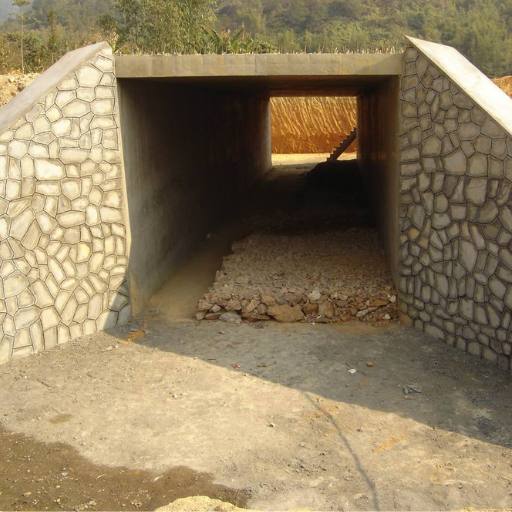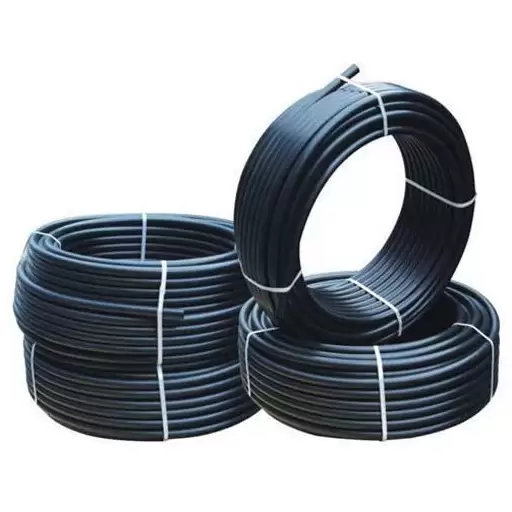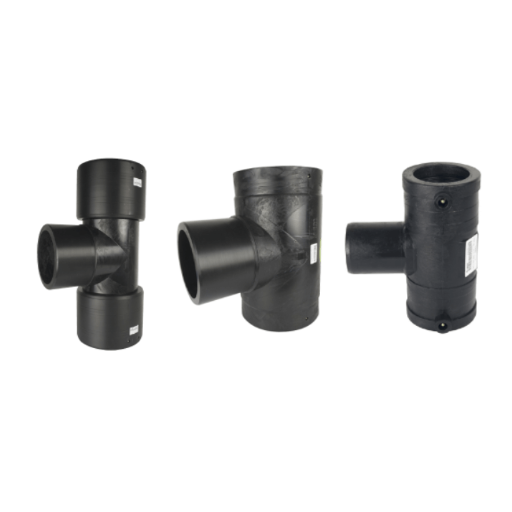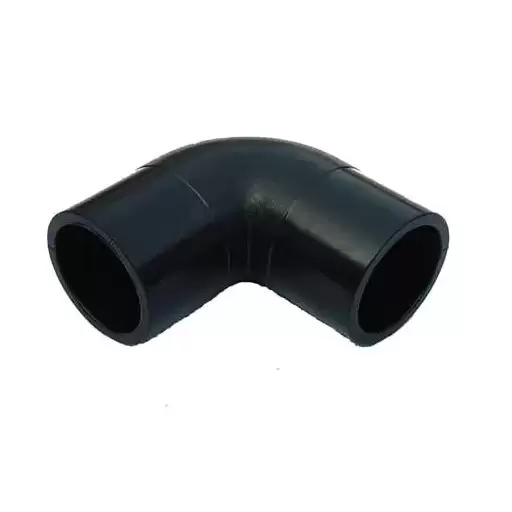Culverts play a crucial role in managing water flow and preventing flooding, ensuring the safety and longevity of roads, railways, and other infrastructure. However, over time, these structures are subjected to significant wear and tear due to erosion, heavy loads, and environmental factors, which can lead to structural failures if not addressed promptly. This article explores the essential techniques and materials used in culvert repair to mitigate such risks and prevent collapse. Whether you’re a civil engineer, contractor, or infrastructure manager, understanding the intricacies of culvert maintenance is vital for preserving functionality and avoiding costly disasters. From advanced repair technologies to durable material choices, this guide will equip you with the knowledge needed to approach culvert repair with confidence and precision.
Importance of Regular Culvert Inspections
Image source:https://baike.so.co
Identifying Signs of Damage
Regular culvert inspections are necessary to observe and record signs of structural and functional damage at the earliest. Signs of damage include cracks or fractures visible on the culvert walls, which indicate deterioration of the materials and potential structural failure. Deformation of the culvert pipe, or its buckling, usually indicates excessive pressure from soil or traffic loads, thus compromising it from maintain its original shape and function.
Hydraulic ailments, meanwhile, are an instantiation of another kind of damage. If a culvert’s capacity to discharge water is obstructed, if there is surface pooling near the culvert, or if there is erosion occurring at the points of inlet and outlet, these kinds of situations might be evidence of partial blockage, sediment accumulation, or failure of the protection measures around the culvert. Problems of this nature, if left unattended, will normally either lead to overtopping or will begin to undermine the nearby infrastructure.
Also, rust, corrosion, or other wear of materials that steel or concrete may face is another sign of culvert deterioration. Joint separations should also be checked, as these allow water infiltration that may trigger soil migration or void formation near the structure. Allowing immediate identification of these signs leads to the possibility of remedial actions being taken, thus ensuring the structure’s integrity and operational viability.
Benefits of Preventive Maintenance
Preventive maintenance represents enormous advantages, as it contributes to fewer sudden failures and expensive repairs from occurring in the first place. Periodic checking and rectification of how things go wrong according to the signs and symptoms can extend the life of that infrastructure or system. It, therefore, enhances reliability by shutting down a range of downtime caused by operations in a way that can put a drip on their productivity. The U.S. Department of Energy claims that preventive maintenance has the potential merit of cutting down equipment breakage by 75%, thus proving its worth in system reliability.
Another good point is cost savings. While preventive maintenance costs time and resources, it allows an organization to pay less in the long term. Spontaneous expenses of emergency-based repairs, part replacements, and sudden shutdowns are usually way more expensive than any routine maintenance.
Servicing improves the safety standard. One of the principal acute methods of service is by avoiding aggravation of foundation conditions or mechanical faults that are sometimes said to be roadblocks to incurring great hazards to life and the environment when found late. Keeping the systems at an optimum performance level means that an organization will not only be safe but also maintain the form of compliance with laws on safety. Preventive maintenance is, therefore, a sure path to operational efficiency, cost benefits, and good safety standards.
Inspection Frequency Recommendations
The frequency of inspections suggested varies according to the system, equipment, or facility being analyzed. Most industrial equipment should undergo inspection monthly to catch any early stages of wear or failure. In cases where machinery or systems are grueling and demand continuous operation under busy conditions, such as power generation or pressure vessel operations, inspections may be conducted more frequently-whether it is on a weekly or daily basis, to enhance the likelihood that there would be no unforeseen downtime.
Annual inspections are usually scheduled for overall assessments that include detailed analysis and testing. These analyses would typically involve some non-destructive examination methods like ultrasonic or radiographic testing, which are concerned with unveiling any hidden faults that cannot be seen during more common inspections. Conducting inspections on this basis ensures regulatory compliance on inspection aspects while also tracking long-term degradation of the system under test.
For industries where strict regulatory adherence is required, especially in aviation and chemical processing, inspection frequencies are often defined or mandated by the governing bodies or respective standards, such as OSHA or ISO. Organizations involved in such sectors should strictly adhere to these specified guidelines to avoid non-compliance and safety issues. Finally, a given inspection schedule should be generated according to manufacturer recommendations and industry-specific regulations, with due consideration for the unique operating conditions of the equipment.
Common Culvert Repair Techniques
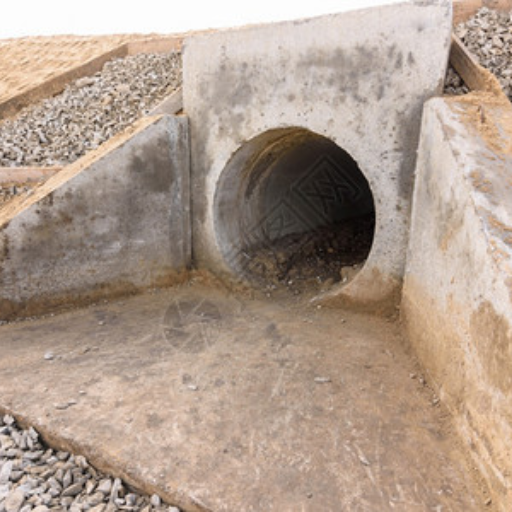
Patch Repairs for Minor Damage
Patch repairs for minor damages in culverts offer highly efficient, cost-effective interventions to local deterioration due to small cracks, spalling, or minor joint failure. For a repair, the exposed surface is cleaned of debris and loose material, followed by an application of a bonding agent. Thereafter, a high-strength repair mortar or a specially formulated epoxy with the repair mortar is applied to fill and seal the damaged section.
In addition, high-performance materials such as fiber-reinforced concrete or polymer-modified mortars could be used to provide further structural strength and durability against environmental stresses, thereby enhancing the overall life span of the repair. It is crucial to consider the natural properties of the culvert material itself-whether concrete, steel, or plastic-so as to be able to select the patching compound best suited to match the physical and chemical properties of the substrate.
Regular inspection should be done post-repair to ensure whether the patch is performing as expected and to detect the early onset of any further deterioration in time. This would maintain the structural integrity of the culvert and keep it in line with best maintenance practices and relevant regulatory standards.
Reinforcement Methods for Structural Support
Structural support reinforcement for culverts and such infrastructure requires a rational approach to improving load capacity and durability. A popular method of reinforcing structures is steel reinforcement or rebar placement. This is particularly useful in concrete culverts where crack propagation is a major issue. Fiber-reinforced polymer (FRP) systems feature another sophisticated choice, seeking to strengthen with high-strength, corrosion-resistant materials, to prevent overburdening with weight.
In the old culverts, deformations in the surface plate are seen, with internal bracing or ribs installed to distribute external loading more evenly and prevent localized stress concentrations. Geosynthetics, such as geotextiles and geomembranes, may also be used to strengthen the external layers of the structure to aid in moisture control and erosion control.
Shotcrete or spray-applied concrete with embedded reinforcement is increasingly being applied for fast and uniform structural enhancement. With a suite of modern monitoring systems, including load sensors and strain gauges, repair techniques can gather real-time data used to judge the effectiveness of reinforcement.
The design should be established by the quantitative load analysis and standards such as ASTM and AASHTO to be consistent with engineering practices. These methodologies represent a systematic approach to structural weaknesses while optimizing longevity and safety.
Replacement Strategies for Severely Damaged Culverts
Severe damage to an existing culvert should entail replacement to restore the culvert’s proper functioning and structural integrity. Replacement strategy selection is based on factors such as hydraulic efficiency, environmental considerations, bearing requirements, and codes and standards compliance, for example, ASTM and AASHTO. In the modern construction environment, protecting the environmental infrastructure to the greatest possible degree while ensuring durability and service life are the primary goals of construction activities.
Among the most viable options today is the placement of precast concrete culverts, providing high levels of structural strength with expedited installation time in comparison to the traditional cast-in-place counterpart. Concrete units are usually crafted in a controlled environment to ensure product uniformity and minimum variability concerning strength and performance. Alternately, materials such as those comprising high-density polyethylene (HDPE) or corrugated steel may be considered due to their lightweight, corrosion-resistant, and flexible nature vis-à-vis diverse flow conditions.
New technologies in installation methods, primarily trenchless installations using pipe jacking or microtunneling, are becoming common for culvert installation or replacement within urbanized or environmentally sensitive areas. Surface disturbances are minimized, and timelines are expedited for projects undertaken in a high-traffic zone or environmentally protected locale. Conversely, the use of geosynthetics for bedding and backfill can substantially assist in stabilizing the installation and minimize future subsidence or erosion.
Following culvert replacement, hydraulic and flow rate calculations control culvert design. Hydrological modeling schematics, which further consider peak flow, sediment transport, and upstream-downstream impacts, ascertain that the culvert enables the passage of flows even under maximum weather events without delay to functionality. This paves the way for designing the culverts in line with site-specific conditions and environmental mitigation measures, such as those to allow fish passage on the waterway.
On the other hand, maintaining a balance between cost-efficient, repair needs over the long term, and sustainability is of higher priority while making decisions. Whereas advances in material technology combined with modular construction techniques result in a profitable solution for every individual project, making sure that such a solution will stand against any kind of stress placed on it in the future, along with environmentally friendly outcomes.
Advanced Repair Solutions
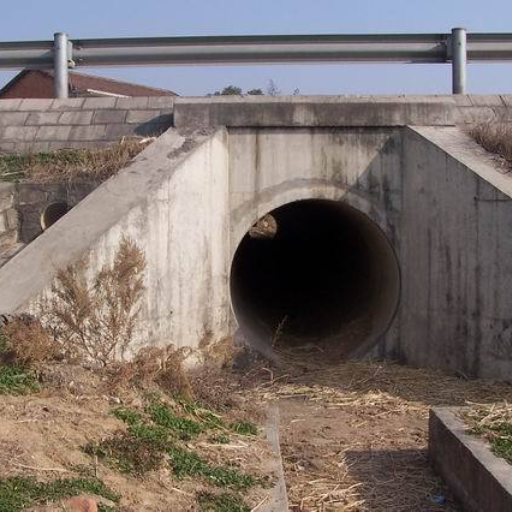
Utilizing Geosynthetics in Repair
Introduction of Geosynthetics in repair works has been required, mainly due to their versatility, durability, and cost-effectiveness. These synthetic materials, including geotextiles, geomembranes, and geogrids, find their applications in soil reinforcement, erosion control, and waterproofing. Lightweight yet strong, geosynthetics enhance the structural integrity of damaged infrastructure and reduce environmental impact. Their level of sophistication, meanwhile, allows them to contend with site-specific problems that render them useful in repair works involving complex or sensitive ecosystems.
Functionally, geosynthetics offer benefits such as load distribution, subsurface stabilization, and drainage improvements. In erosion control, for example, geotextiles inhibit sediment displacement, maintaining slope stability even under heavy rainfall. For water containment, geomembranes serve as an effective barrier to leakage and seepage, thereby greatly increasing the life expectancy of infrastructure like reservoirs, canals, and landfills. Meanwhile, soil stabilization using geogrids is especially pertinent to projects that have to contend with weak and unstable grounds.
In my opinion, geosynthetics provide a very great and efficient option for the repair works in response to modern engineering needs. They favor sustainability, ease of application, and cutting construction times and costs to a concrete level. In integrating geosynthetics in repair works, engineers will rely on a system that is highly durable with minimal maintenance, meets stringent environmental requirements, and so forth; these are the demands that must be catered to to achieve sustainable and future-proof infrastructure.
Trenchless Technologies for Efficient Repairs
Trenchless technologies have transformed infrastructure repairs by eliminating immense excavation and concurrent surface activity disruptions. These methods include horizontal directional drilling (HDD), cured-in-place pipe (CIPP) lining, pipe jacking, and sliplining, among which are selected based on the issues arising in repair and installation. Using highly sophisticated equipment and accurate engineering, trenchless methods aim at minimizing environmental effects and reducing the time of project execution, thus benefiting the entire ecosystem.
CIPP, for instance, involves inserting a resin-coated liner into the damaged pipe and curing it there, restoring structural integrity to the pipe without excavating. Similarly, HDD installs underground utilities by drilling along a predetermined path with minimal surface disturbance. These processes are particularly efficient in urban areas where traditional excavation would wreak havoc on traffic, businesses, and utilities.
CIPP can enhance pipeline life by as much as 50 years, whereas HDD is popularly embraced for pipeline laying with better accuracy under diverse soil conditions. Further, research equates trenchless technologies with 75% emission reduction when compared to emissions from conventional technologies, which is also great in view of sustainability concepts in modern engineering.
Going forward, with significant innovations in materials, robotics, and monitoring systems, trenchless technologies will surely find superior solutions to bodingly complex infrastructure problems. The elevated application in utilities, municipal, and transportation sectors cements their position as a vital means for efficient, long-term, and environment-friendly repair options.
Innovative Materials for Long-lasting Repairs
Developing innovative materials has made trenchless repair methods much more durable and efficient. For instance, polymer composites are preferred for their high strength-to-weight ratios and environmental degradation resistance. These materials are materials such as epoxy resins and fiber-reinforced polymers (FRP) that line the pipelines to withstand high pressures and exposure to chemicals. High-density polyethylene (HDPE) and cross-linked polyethylene (PEX) are also in wide use for their properties of absorbing little water, being flexible, and having a very long service life.
A second innovation arriving on the scene consists of self-repairing materials. These materials feature microcapsules or vascular networks with embedded healing agents triggered upon damage or formation of tiny cracks, thereby extending the operational life of infrastructure. When combined with nanotechnology, the stability of the self-healing materials is further enhanced to enable super-precise anti-damage and self-repair actions.
Sustainability is considered paramount in developing materials. Consequently, recycled and environmentally friendly materials such as geosynthetics and recycled concrete aggregates are seeing wider use in trenchless repair. Such materials have a low carbon footprint, comply with the worldwide sustainability agenda, and are often cheaper than their traditional counterparts. Through this kind of development, new materials pave the way for sturdier, sustainable, and long-lasting solutions to present-day engineering challenges.
Cost-Effective Materials for Culvert Repair
Comparing the Durability of Various Materials
Materials may be durable, but they may also very well differ in this regard. Metals, ceramics, plastics, composites, or even natural materials such as wood and stone, are usually compared for their strength, resistance to wear, and longevity.
Outlined here is a very concise table listing the important points:
|
Material |
Durability |
Resistance |
Applications |
Cost |
|---|---|---|---|---|
|
Metals |
High |
Corrosion |
Construction, tools |
Medium-High |
|
Ceramics |
Very High |
Heat, Wear |
Aerospace, tiles |
High |
|
Plastics |
Moderate |
Corrosion |
Packaging, pipes |
Low-Medium |
|
Composites |
High |
Weight, Strength |
Sports, aerospace |
High |
|
Wood |
Moderate |
Decay (treated) |
Furniture, construction |
Medium |
|
Stone |
Very High |
Weather |
Monuments, buildings |
High |
This table provides a quick comparison of durability, resistance, applications, and cost for various materials.
Eco-Friendly Options for Sustainable Repairs
Improvement in the green materials sector has opened new possibilities in repair techniques, particularly in culvert repair projects. The most important amongst them would be geopolymer concrete, recycled thermoplastics, and high-density polyethylene (HDPE). Geopolymer concrete, made from industrial by-products such as fly ash or slag, has been picking up in demand mainly because it has a much lower carbon footprint than products based on Portland cement. According to the various studies, there could be as much as a 50 percent reduction in greenhouse emissions from engineering options based on geopolymer, which makes it one of the very best selections in terms of engineering for sustainability.
In recycled thermoplastics, these usually come from post-consumer waste streams and help lower the environmental load of plastic waste while serving as a tough and resilient option in the lining and structural strengthening of culverts. These polymers are highly resistant to corrosion, chemical attack, and abrasion, assuring a very long service life.
Being a very versatile material, HDPE is also one of the top eco-friendly alternatives. HDPE offers a good lightweight and easy installation option while proving to be an excellent choice for flexibility and structural integrity under applications that require versatility and cost-effectiveness.
Combining their environmentally friendly set of materials, engineers are therefore able to deliver sustainable repair solutions that reduce environmental impact yet provide robust and long-lasting repair outcomes. These materials are in line with global green construction protocols and are critical to succeeding in broader environmental preservation goals in civil engineering projects.
Estimating Costs for Different Repair Methods
Careful assessment of several key factors is necessary to determine the accurate costs of various repair options in civil engineering projects. The foremost cost variables are type and grade of material, extent of damage, labor, equipment, and time consumed. For instance, composite materials such as fiber-reinforced polymers might cost more initially than conventional materials like concrete, but perhaps the maintenance expense is less because of longer durability and life span on their part.
Such cost considerations will also be affected by regional factors such as labor rates, transportation logistics for material delivery, and adherence to local building codes. Engineers, now armed with emerging technologies such as digital twin simulations and predictive modeling, analyze with utmost precision the various repair scenarios and costs thereto, ultimately optimizing time and budgets. Another environmental consideration—that is, going green—may cost more upfront, but achieving sustainability targets opens the door to subsidies or tax incentives.
By synthesizing data-based tools and cost-effective evaluations, cost estimates for repair solutions can be prepared by project managers in detail and with high reliability while conforming to both technical and financial constraints.
Understanding the Risks of Culvert Collapse
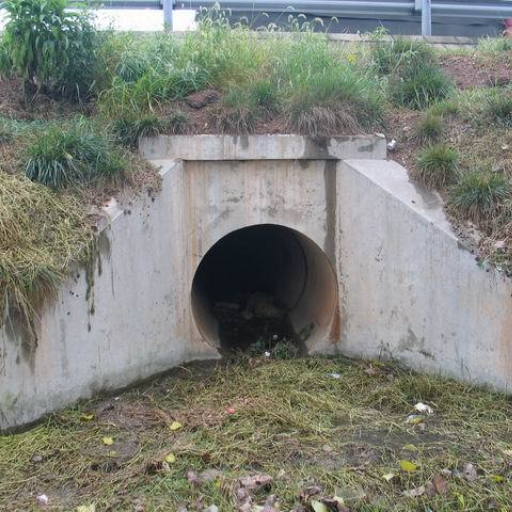
Factors Leading to Structural Failure
Structural failure in culverts arises due to material fatigue, the influence of the environment, and cases of deficient maintenance. Thus, the corrosion or degradation of materials remains paramount since steel and concrete culverts can remain submerged in water, chemicals, or varying environmental conditions. This causes corrosion or deterioration, gradually weakening the structure so that cracking develops in the walls or where slight distortion occurs.
Problems arise hydraulically, such as with scour or erosion by fast-moving water, to undermine the foundation and produce settling around the culvert, so that the disruption of load becomes worse. There are also design-oriented causes of failure: inadequacy in bearing load or improper size concerning increasing vehicular or hydraulic loads, which may cause the rapid degradation of operational conditions.
A further cause entails improper installation or soil compaction processes, resulting in voids and uneven stresses beneath the structure. In many instances, irregular or improper maintenance can allow minor problems, such as a blockage or a small crack, to develop into major safety hazards that culminate in total or partial collapse. Knowing these multifarious risk factors becomes imperative in setting up a systematic inspection schedule as well as proceeding toward proactive reinforcement.
Consequences of Neglected Repairs
Neglecting a vehicle’s necessary repairs will portend cascading ill consequences that may be immediate or distant. One significant consequence is the accelerated diminution of structural strength, and with it, the risk of sudden, catastrophic failure under load. For instance, unnoticed corrosion in the steel reinforcements decreases their tensile strength with time, while the building itself loses the ability to accommodate additional stresses.
Indeed, from a financial perspective, the longer the repairs are delayed, the more imminent it becomes for minor defects to convert into major structural inadequacies, requiring extensive and costly remedies. Repair charges balloon to more than three to five times the initial estimate when the repair is postponed past the stage of noticing the first signs of damage, according to industry case studies.
Safety standards may then be compromised owing to non-repair situations, endangering occupants or users with the possibility of falling debris, sagging floors, or partial collapses. Indeed, the threat of lawsuits will increase: any negligent failure to address a pertinent maintenance issue will have serious legal consequences and liabilities for the property owner and stakeholders.
The presence of ill-maintained, decaying structures leads to inefficiencies concerning environmental resources and materials, as maintenance failure usually entails the complete replacement instead of partial remedy, which in turn augments waste and increases carbon footprint. Therefore, to remark on a timely repair is economically as well as ecologically important.
Best Practices to Mitigate Risk
The institution of risk management strategies in anticipation of risks is a platform to guarantee safety, regulatory compliance, and operational efficiency. The following are some practices to address some of the short-term and long-term risks arising from deterioration and hazards in infrastructure:
- Inspections and Audits regularly: Scheduled inspections in the early detection of structural weakness or breach of safety allow for special tools like infrared thermography or drones with high-resolution sensors to be deployed to inspect wear, corrosion, or any potential failure in unreachable locations.
- Preventive Maintenance Frameworks: Setting and following preventive maintenance frameworks would be the next essential option, in other words, replacing parts that have nearly reached the end of the service life period and repairing things soon before they experience any failure. For example, predictive analytics employing IoT sensor data can be used to appropriately schedule and budget for maintenance activities.
- Proper Communication among Stakeholders: Use a centralized communication platform for exchanging updates among stakeholders to ensure all parties involved are well informed regarding maintenance, risk status, or critical on-site developments. CMMS (Computerized Maintenance Management Systems) software provides good reference and transparency for all parties involved.
- Environmental and Compliance Assessment: Include regular environmental assessments and compliance with international standards like ISO 14001 to reduce environmental impacts and legal obligations. This would perfect sustainability and reduce liabilities caused by negligence.
- Technological Upgrading: Employ the latest technologies, such as AI-based monitoring systems and real-time analytics, to spot and anticipate failures more accurately. BIM (Building Information Modeling) systems can further ensure structural integrity by simulating points of stress and degradation over time.
- Adequate Insurance for Comprehensive Risk: The balance maintains adequate insurance coverage to obviate the financial repercussions that may arise from unforeseen incidents. Policies that are specific to risk offer safety against damages sustained to property or loss of income during downtime.
In conjunction with these practices, organizations can successfully address the risk-related issues of infrastructure and operations while striving to optimize resource allocation, maintain standard compliance, and ensure ecological responsibilities.
References
Frequently Asked Questions (FAQ)
Q: What is culvert repair, and why is it important?
A: Culvert repair involves fixing or rehabilitating deteriorating culverts to ensure proper water flow and prevent flooding. It is important to maintain the integrity of stormwater systems and avoid issues like sinkholes, which can occur due to collapsed or damaged culverts.
Q: How do I know if my culvert needs repair?
A: Signs that your culvert may need repair include visible cracks, misalignment, or signs of erosion. If you notice water pooling or shifting soil around the culvert, it may be time to consult a professional for an inspection and assessment.
Q: What are the common methods of culvert rehabilitation?
A: Common methods of culvert rehabilitation include trenchless rehabilitation, which allows for repairs without extensive excavation, and reinforced concrete lining, which strengthens the existing structure. These methods can effectively restore culverts and extend their lifespan.
Q: How long can a culvert last before needing repair?
A: The lifespan of a culvert can vary significantly based on materials and environmental conditions, but many culverts can last up to 20 years or more with proper maintenance. Regular inspections and timely repairs can help maximize their longevity.
Q: What materials are commonly used in culvert repair?
A: Common materials for culvert repair include reinforced concrete and corrugated metal. The choice of material often depends on the culvert’s diameter, the surrounding area, and the specific repair needs.
Q: Can I perform culvert repair myself, or should I hire a specialist?
A: While some minor repairs can be done DIY, it’s often best to hire a specialist for significant issues. Experts have the knowledge and tools to accurately assess the situation and provide effective solutions for culvert rehabilitation.
Q: What are the consequences of neglecting culvert repair?
A: Neglecting culvert repair can lead to severe consequences such as flooding, property damage, and increased erosion. Deteriorating culverts can also create hazards like sinkholes, making it crucial to address issues promptly.
Q: How can I prevent future issues with my culvert?
A: To prevent future issues, regular maintenance and inspections are essential. Keeping the area clear of debris, monitoring for shifting or erosion, and addressing small problems before they escalate can help ensure the long-term functionality of your culvert.
Q: What should I look for in a culvert repair expert?
A: When selecting a culvert repair expert, consider their experience, reputation, and reviews from previous clients. A knowledgeable professional should be well-versed in culvert rehabilitation techniques and familiar with local regulations in Minnesota and surrounding areas.



